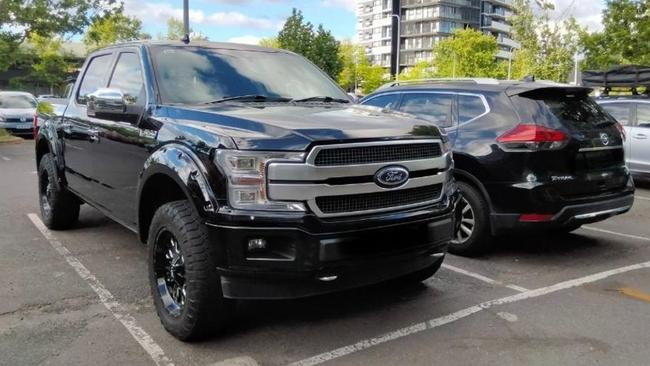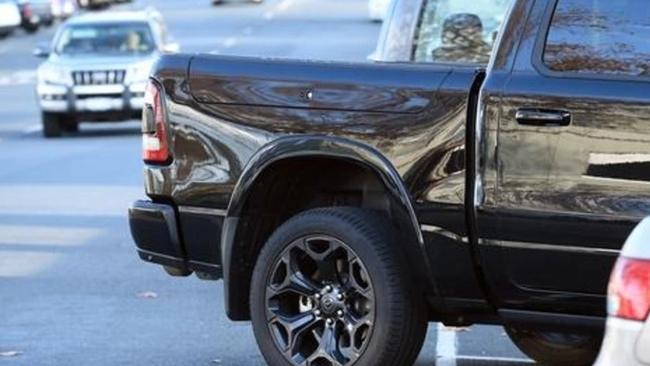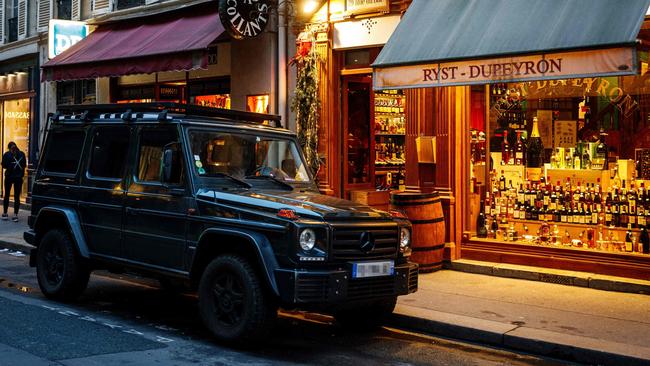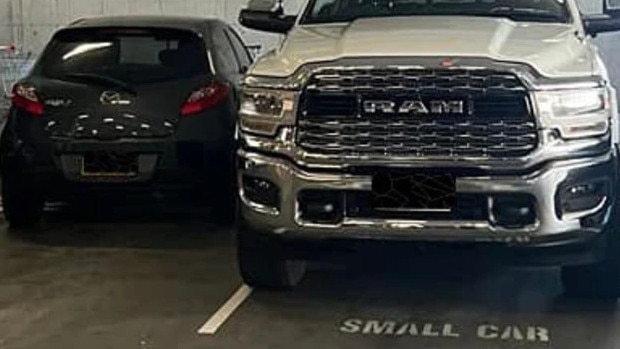City of Sydney council to consider charging oversized vehicle owners three-times more to park on CBD roads
A Sydney council will consider charging owners of oversized SUVs and RAMs with higher parking fees as much as $25 per hour in a climate-conscious move to tackle air pollution and road safety.
Local
Don't miss out on the headlines from Local. Followed categories will be added to My News.
A City of Sydney Greens councillor wants owners of SUVs, RAMs and other super-sized vehicles to be charged more to park their cars on CBD streets in a climate conscious move to deter gas-guzzling vehicles from driving on inner-city roads.
Owners of large vehicles would be slugged with parking charges as high as $24.60 per hour under a Sydney-first parking proposal aimed at addressing carbon emissions and road safety.
Greens councillor Matthew Thompson – who is spearheading the move – said the rise of “bigger, heavier and dirtier” vehicles is putting the safety of cyclists and pedestrians at risk as well as wiping out gains towards addressing climate change.
“SUVs are killers (and) if they were a country, they would be the world’s fifth largest emitter of CO2,” Mr Thompson said.
“They are far more dangerous than normal passenger cars and pose increased risks to pedestrians, cyclists and other road users.

“They also increase damage on inner city roads, thereby increasing maintenance costs on roads.”
The proposal is similar to a parking fee model introduced in Paris last year which tripled parking rates for larger vehicles weighing more than 1.6 tonnes in a move to tackle the city’s air pollution.

In Sydney, Mr Thompson’s proposal would see owners of the large vehicles pay as much as $24.60 per hour to park in the council’s metered parking zones – three times higher than the standard maximum $8.20 limit.
It is unclear how the policy would be enforced, however the proposal has been supported by some cycling groups – with some even calling for the council to go further and introduce a blanket ban on “tank-like” vehicles on CBD streets.
Peter McLean, chief executive officer of Bicycle NSW, said large and bulky vehicles can pose serious dangers to cyclists on narrow city roads.
“They’re basically 4-5 tonne small trucks, double the size of small cars and it’s in tight city streets they take up a huge amount of space,” he said.

“They don’t belong in our cities and providing a disincentive such as increased parking cost is a positive measure.”
Figures from the Federal Chamber of Automotive Industries show nine of the 10 most popular cars in Australia last year were SUVs or utes.
National sales of RAMS meanwhile topped 3800 last year with some models measuring up to 2.4m wide – making them up to 40cm wider than a Toyota HiLux.
Michael Timms, the NSW chair of the Australasian College of Road Safety, said while all larger vehicles in Australia must meet Australian standards, they could pose increased risks to pedestrians or cyclists if involved in a collision.

“When someone is hit with a sedan they’re typically hit in the legs, however larger vehicles have higher ground clearances which means a pedestrian is more likely to be hit in the chest or physically in danger of being run over,” he said.
The Federal Department of Infrastructure – which sets national vehicle restrictions – said current vehicle standards ensured all vehicles met safety and environmental emissions standards before they enter the Australian market.

“This legislation ensures road vehicles sourced directly from international markets, such as the RAM and Silverado vehicles, are safe for local driving conditions before they are presented for registration,” a spokeswoman said.
Mr Thompson’s motion is due to be discussed at the council meeting on Monday and if supported would involve the council investigating the feasibility of the measures.
He said any potential changes would include “equity caveats” to ensure the parking fees do not unfairly impact tradespeople or people with a disability.
RAM Australia was contacted for comment but did not respond to questions.





